HOME SWEET 3D PRINTED HOME
BUILDING A BETTER WORLD ONE LAYER AT A TIME
HOME SWEET 3D PRINTED HOME
These 3D printed homes can be personalized and designed in ways never before possible.
Once the realm of science fiction stories and inspiring TED Talks, 3D printed homes are rapidly becoming a reality. Teams of architects, engineers, and entrepreneurs have developed custom 3D printing machines designed to print a small home layer by layer, in less than a day, for a fraction of traditional construction costs.
But it isn’t all about creating a home for less. These 3D printed homes can be personalized and designed in ways never before possible. So, they aren’t just more attainable: They can provide a level of design aesthetic equal to some of the most expensive handcrafted homes. Before we get into some of the current pioneers of this technology, it might help to know more history on 3D printed housing.

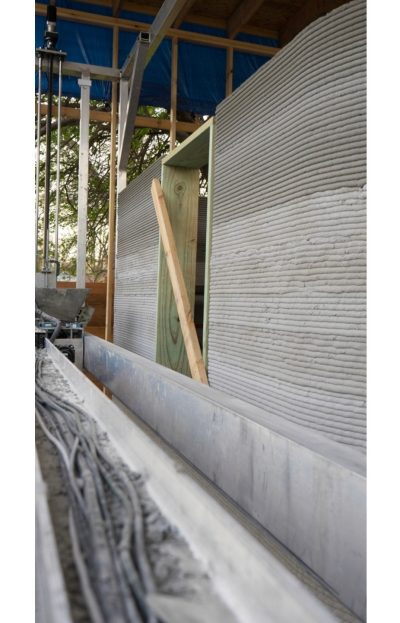
HOW DID THE 3D PRINTED HOUSE GET ITS START?
We need to go all the way back to the 1950s to explore the initial seeding of the technology. It was then that the first concept of a robotic bricklayer began to surface. Of course, at the time, the vision far outweighed the tools of the time. Development of automated fabrication of entire buildings using slip-forming techniques and robotic assembly of components, akin to 3D printing, were pioneered in Japan to 1980s and 1990s. It sped up the construction process but didn’t provide the freedom of design that many desired.
Fast forward several decades, and technology finally caught up with engineering visions. The first inhabitable 3D printed home was erected in Nantes, France, in April 2018. The University of Nantes and the Nantes Digital Sciences Laboratory developed the five-bedroom home, and a machine called the Batiprint3D built its frame in 18 days. It ushered in the maturity of the technology – and a race to commercialize it around the world.
WHY THE RISE OF 3D PRINTED HOMES NOW?
Shelter is one of the most basic human needs, yet according to the United Nations, over one billion people worldwide live in sub-standard housing. Think of ramshackle homes fortified with scrap metal and founded on unfinished or dirt flooring.
It’s a serious and growing problem – and one that traditional construction methods are not equipped to handle. Luckily, a few forward-thinking companies are turning to 3D printing to help alleviate this housing crisis. And one in particular has a very ambitious goal.

Shelter is one of the most basic human needs, yet according to the United Nations, over one billion people worldwide live in sub-standard housing.
MEET MAREK KAMINSKI Polar explorer, author, photographer, and entrepreneur.
WORKING TOGETHER TOWARDS AN AFFORDABLE SOLUTION
New Story, a nonprofit based in San Francisco, aims to use this transformative technology to build entire communities of 3D printed dwellings that are not only aesthetically pleasing but extremely affordable. It plans on working with each community directly to incorporate as many of their needs as possible.
Because the housing is built using software, it’s possible to offer options for different designs, depending on family size. Starting off big, they plan on building an entire community of 3D printed homes in Latin America in 2019. If that sounds ambitious, just consider the nonprofit’s resume. It has built over 850 traditionally constructed homes in Bolivia, El Salvador, and Haiti. On top of that, it has funded over 1,400 worldwide. It’s safe to say it has the right background for this project. But it had one big hurdle to overcome. While New Story had the willpower to get it done, it still needed the engineering might.
A PARTNERSHIP BASED ON A SHARED PASSION
ICON, the engineering minds behind an ingenious 3D printer that builds the walls of a house one concrete layer at a time, turned out to be the perfect partner. New Story says of ICON, “A year ago, the technology we needed didn’t exist. That’s when we began working with ICON to create a solution to a seemingly unsolvable problem.” The exciting result? The Vulcan, a 3D printer designed to print a home for less than $4,000 in less than 24 hours.
And it’s clear from what Jason Ballard, co-founder and CEO of ICON, has to say that these two partners are on the same page. “It’s our mission at ICON to re-imagine the approach to homebuilding and construction and make affordable, dignified housing available to everyone throughout the world.”
It’s that kind of shared mindset, combined with the drive and ambition of both New Story and ICON, that is propelling the project in Latin America forward – and potentially many more to come.
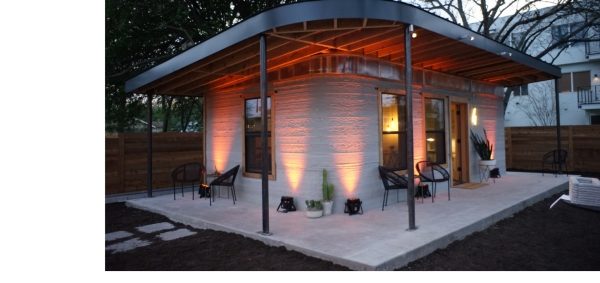
PRINTING A COMMUNITY IS JUST THE BEGINNING
Assuming its first large-scale 3D printing project goes as planned, New Story aims to fully shift to 3D printing. The team envisions plotting routes to bring the printers from community to community in countries around the world. It’s also open to sharing the technology with others as a way of speeding up the process.
Who knows? With the rapid advancement of this technology, there’s a good chance you may one day soon sit down with an architect, design your dream home on a computer, and move into it the very next day.
CHECK OUT THIS NISSAN WITH ZERO EMISSIONS ELECTRIC POWER
NISSAN LEAF
LEARN ABOUT NISSAN LEAF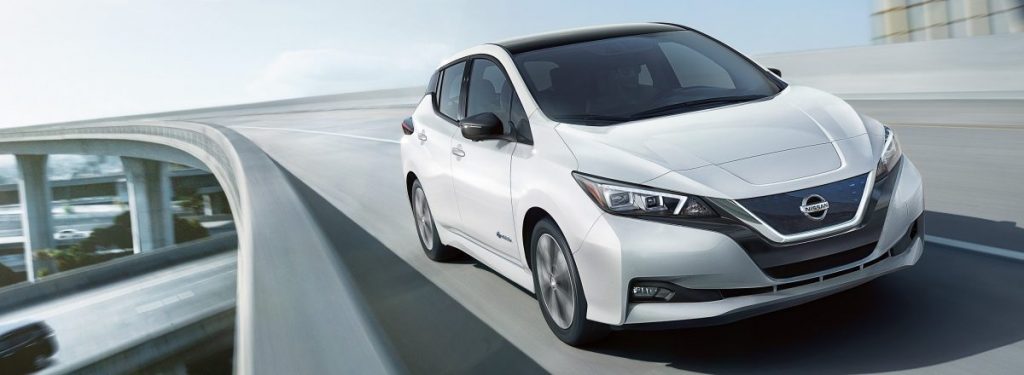
YOU MAY ALSO LIKE
MEET HIROSHI ISHIGURO, THE MAN WHO MAKES A.I. MORE HUMAN
THE FUTURE IS ROBOTIC
MEET HIROSHI ISHIGURO, THE MAN WHO MAKES A.I. MORE HUMAN

To famed roboticist and Nissan technology consultant Hiroshi Ishiguro, how well people accept artificial intelligence depends on one thing above all: how human it is. To Ishiguro, a more humanlike presence makes A.I. easier to accept, fostering what he calls “natural interaction” between human and machines.

In Las Vegas at CES to help present new in-vehicle technology from Nissan, the shaggy-haired, chill-vibed Ishiguro stood out against a backdrop of businesslike automotive execs. What was he doing there? What did Nissan hire him to do? “Concept building,” Ishiguro said without much elaboration. In the competitive field of technology where secrecy rules, we can’t blame Ishiguro for being tight-lipped. To really understand why Nissan hired him, you need to know more about Ishiguro and his work.
ROBOT DESIGNER.
ANDROID SPECIALIST.
ARTIST.
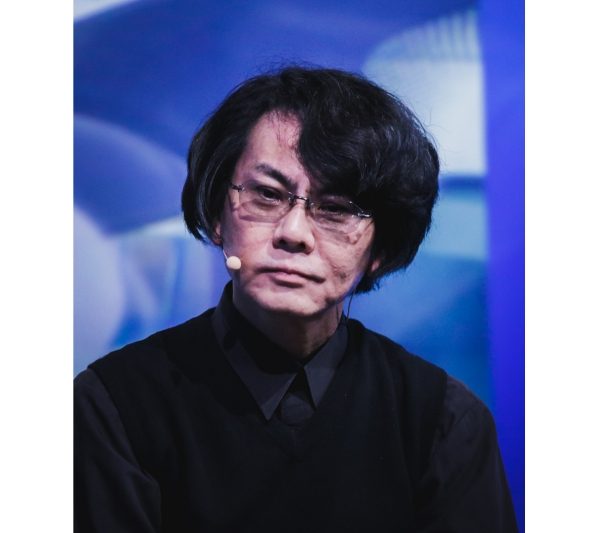
Blessing the lifeless with life is a specialized trade. In this small but important field, there’s an elite group of innovators/leaders. Fittingly, Ishiguro’s the director of the Intelligent Robotics Laboratory, part of the Department of Systems Innovation in the Graduate School of Engineering Science at Osaka University in Japan. That’s just his day job. On the side, he’s a bit of an internet sensation.
Search his name online, you’ll see Ishiguro with eerily realistic androids he’s built – some of which have become internet celebrities in their own right. Among his creations are some of the most lifelike androids the world has seen, including Geminoid HI-1, Ishiguro’s virtual twin. The two so are strikingly similar, it’s actually difficult to tell them apart. After witnessing the artistry of these robots, Ishiguro’s previous calling should come as no surprise: He was once an aspiring oil painter.
“A machine that has a friendly voice today, will have a friendly face tomorrow.”
WHAT IT MEANS TO BE HUMAN, TO A ROBOT
In building his robots, Ishiguro’s honed in on what it means to be human – the nonverbal cues, the natural speech irregularities, the nuances that separate us from robots. He believes that his findings are integral to all the A.I. machines that humans will interact with in the future, the least of which are traditional robots. Technology companies are searching more and more for ways to give everyday devices and machines a more humanlike interface, and Ishiguro can help.

“Everything is going to be humanlike in the future,” he says, and it’s difficult to disagree. With at-home assistants becoming as ubiquitous as microwaves, it’s becoming increasingly common to see humans interact with machinery rather than operate it. A machine with a friendly voice today can become a friendly face tomorrow.

MACHINES WITH EMOTION
As he pontificates on the future of A.I., Ishiguro makes an excellent point about the value of emotion in human/machine interaction. He gives the example of a mapping smartphone app that says voice directions to the driver of a car. In monotone robo-speak, Ishiguro reasons, certain things cannot be communicated, like a sense of urgency.
To Ishiguro, a navigation unit that says “Please stop” with a stern, serious tone is far more meaningful – it means your next navigational maneuver must happen NOW. Spoken calmly, this command conveys less urgency, meaning you probably don’t need to act immediately. Emotion, to Ishiguro, communicates valuable information to people, and our machines must learn to communicate it to us through verbal and nonverbal cues.
YOUR FIRST ROBOT MIGHT NOT BE A ROBOT
Conversing with Ishiguro reveals a widely held misconception about robots: the idea that the first robot we interact with will be the prototypical metal cyborg seen often in films. In reality, our first robots will probably be machines we already know, just with a little extra A.I. and a healthy dose of humanlike gestures.
The machine he would like to humanize most? Easy answer. The automobile, to Ishiguro, is like a “big robot” that we can make “more humanlike.”
Perhaps the biggest obstacle to humans adopting autonomous vehicles is one of trust. Would it be less scary to let a car drive you through rush traffic if the car had a face, a voice, and a calming demeanor? Time will tell.
CHECK OUT THIS NISSAN WITH ZERO EMISSIONS ELECTRIC POWER
NISSAN LEAF
LEARN ABOUT NISSAN LEAF
YOU MAY ALSO LIKE
THE NEXT BIG THING, AFTER AUTONOMOUS DRIVING – INTRODUCING INVISIBLE-TO-VISIBLE
LEAVING NO TRACE
THE NEXT BIG THING, AFTER AUTONOMOUS DRIVING – INTRODUCING INVISIBLE-TO-VISIBLE
It’s 2030, and you’re driving a new vehicle down the road. How will you view the road in front of you? How will you connect to the world around you? How will these intersect? Answering these questions, and many more, create the inspiration for Nissan as it works to shape the driving experience of the future.
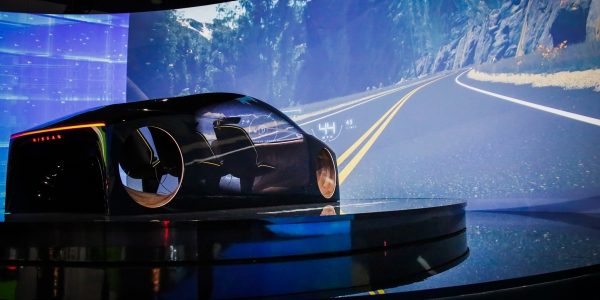
Unveiled at the CES in Las Vegas, Nevada, Nissan’s Invisible-to-Visible is a glimpse into what driving will be like in 2030 and beyond. It’s a vision of future in-vehicle technology that blends the universe, or real world, with the digital world, or “Metaverse.” Think of it as: your reality, enhanced.
MORE CONNECTED THAN YOU EVER IMAGINED.
The beginnings of I2V are present in Nissan Intelligent Mobility – which incorporates a suite of technologies that alert drivers to things they can’t see. It can even step in and take action. I2V evolves the concept further, giving drivers the confidence of having a level of connectivity that’s difficult to imagine today
I2V merges information from sensors outside and inside the vehicle with data pulled from the “cloud.” Drivers can see “what’s ahead – even showing what’s behind a building or around the bend.” You can even get a heads-up on an available parking space. As demonstrated in Vegas, I2V is actually much more than that.
THE FUTURE OF DRIVING BEING BUILT RIGHT NOW. MEET THE ARCHITECTS.
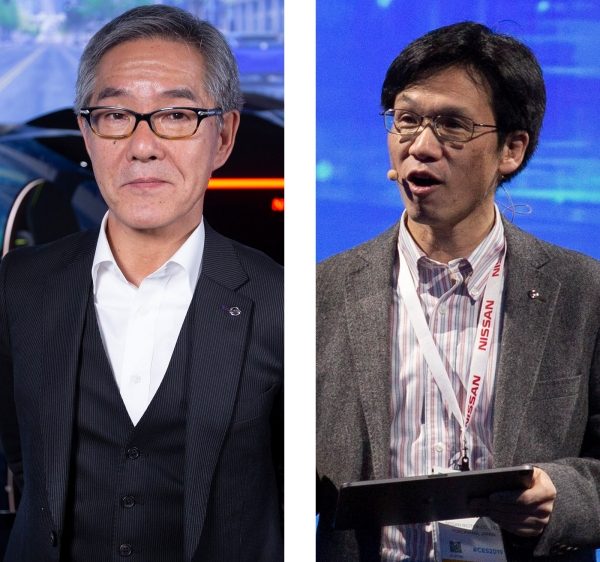
On hand at CES to share the possibilities of I2V were two very forward thinkers from Nissan: Vice President of Research Kazuhiro Doi and expert leader at the Nissan Research Center Tetsuro Ueda. Doi describes I2V-equipped vehicles as being a kind of “robotic suit” that maximizes a person’s physical and mental capabilities, allowing them to figuratively “transcend time and space.” His straight face indicates he isn’t kidding.
And neither is Ueda, who says I2V lets you “share the driving experience and accumulate an unlimited number of connections with a variety of people while having conversations and feeling their actual presence.” Let that sink in for a minute. I2V, according to Ueda, transforms your vehicle into an “experience-sharing machine.” Wow.
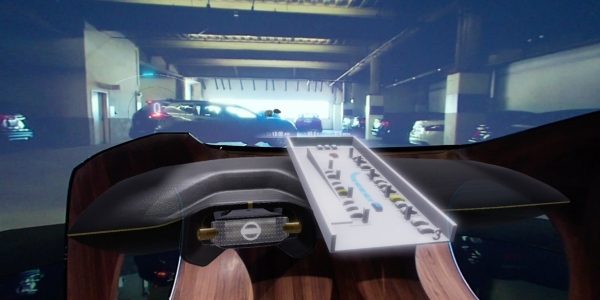
Invisible-to-Visible...transforms your vehicle into an "experience-sharing machine."
To fully grasp Doi and Ueda’s words, just consider the
capabilities of I2V demonstrated in Vegas. As a driver, if you’re not liking the rainy, dull skies, then I2V can lighten them up for you, making your surroundings appear sunny and clear. If you’re feeling bored or lonely, then I2V can invite 3-D avatars to join you. Want to become a better driver? I2V can share driving pointers from the 3-D avatar of a pro driver riding shotgun.
YOUR ROAD. YOUR REALITY.
With the ability to see a world enhanced with the ever-expanding data and computing power of the internet, drivers will no longer need to juggle the real world and the virtual world. I2V joins them as one. You won’t have to think about “syncing” anymore. It will all be there – all of the time.
Although many details of I2V have yet to be revealed, there’s one thing Doi and Ueda are totally sure of: I2V is coming, and it will be every bit as futuristic and high-tech as it sounds while you read this in 2019. If you want to prepare yourself for this new, wired world, start reading and streaming sci-fi stories now. They had it right all along.
CHECK OUT THIS NISSAN WITH ZERO EMISSIONS ELECTRIC POWER
NISSAN LEAF
LEARN ABOUT NISSAN LEAF
YOU MAY ALSO LIKE
NISSAN’S PIKE CARS: INSTANT CLASSICS THAT WERE FEARLESS, FUN, AND UNFORGETTABLE
RETRO CAR DESIGN FOR AN IDEALISTIC FUTURE
NISSAN’S PIKE CARS: INSTANT CLASSICS THAT WERE FEARLESS, FUN, AND UNFORGETTABLE

Retro-futuristic design, irresistible looks, and lines of eager buyers trying to be the first to get one. It’s not the latest smartphone – though they could be accused of being pocket-sized – but the vehicles produced at Nissan’s Pike Factory. And while these cars aren’t hitting the market today, their legend has been enduring since 1985.
Buoyed by a booming economy and an optimistic view of the future, Japanese design began pushing the envelope – from packaging to consumer electronics and more. It was in this climate that Nissan sought to create an innovative vehicle and brought the challenge to a special design team of in-house and independent designers at its newly created Nissan Pike Factory.
The Pike Factory team decided to break away from the more conservative designs being produced by the industry as a whole. Instead, the team further developed the concept of “Nostalgic Modern”, which would be the guiding principle in the development of the Be-1 as well as the other Pike cars.
The Be-1 would emphasise playfulness and excitement – a departure from the average vehicle design of the era. The Pike team believed it had a vehicle that could be an immediate hit with the public, but first it had to prove that the design was worth taking a chance on bringing a concept car into full production.
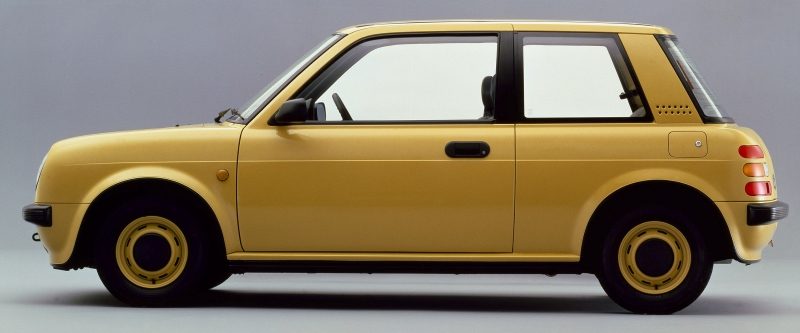
THE PUBLIC SAYS HELLO TO THE NISSAN Be-1
Introduced to the world at the 26th Tokyo Motor Show in 1985, the Nissan Be-1 made a huge splash. Instead of following more common, boxier design cues, the Be-1 looked to the rounder, more compact vehicles of the past. It was small, sleek, curvy, and – let’s face it – kind of cute. Japanese car buyers went crazy for it, and the immediate public response was so positive that Nissan could not ignore it.
When the Be-1 was brought into production in 1987, it was limited to a run of 10,000. Nissan was so inundated with pre-orders that all potential buyers were put into a lottery system. To help satiate demand, a canvas top version was introduced later that year, and it, too, immediately sold out.
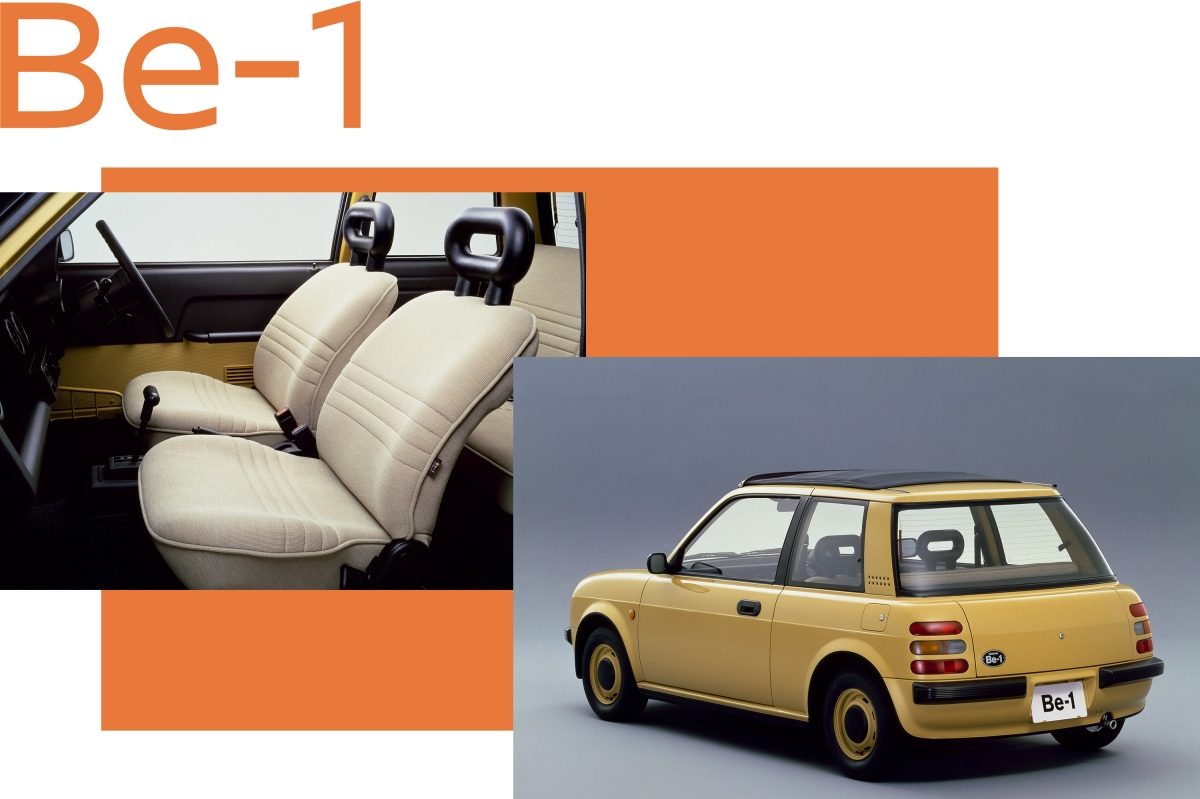
SPEARHEADING A NEW MOVEMENT IN CAR DESIGN
Nissan had a winning concept on its hands and commissioned more designs from the Pike Factory. In fact, the name “Pike” was chosen after the medieval spear to evoke the idea of spearheading new, cutting-edge design. And so, the Pike Factory went on to create the Nissan Pao, Figaro, and S-Cargo.
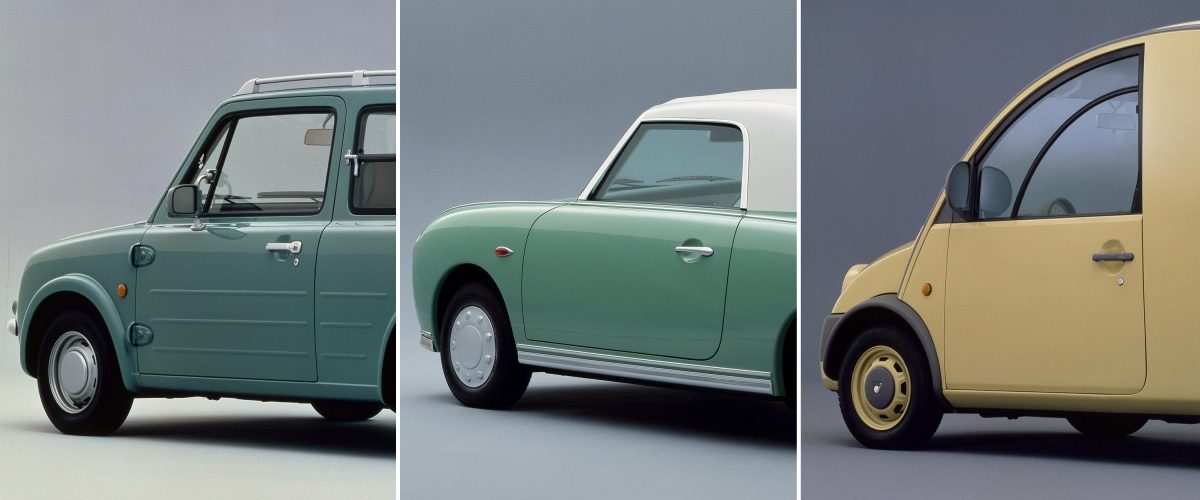
Although always conceived as a series of cars that would be limited in quantity, Nissan upped production of its next Pike car, the Nissan Pao, producing over 50,000 of them. It still sold out three months into pre-orders. Wiith a canvas top, the Pao was designed to express an adventurous spirit with retro sensibilities inside and out. Although it was produced until the early 1990s, it looks like it would be at home in any classic car show.
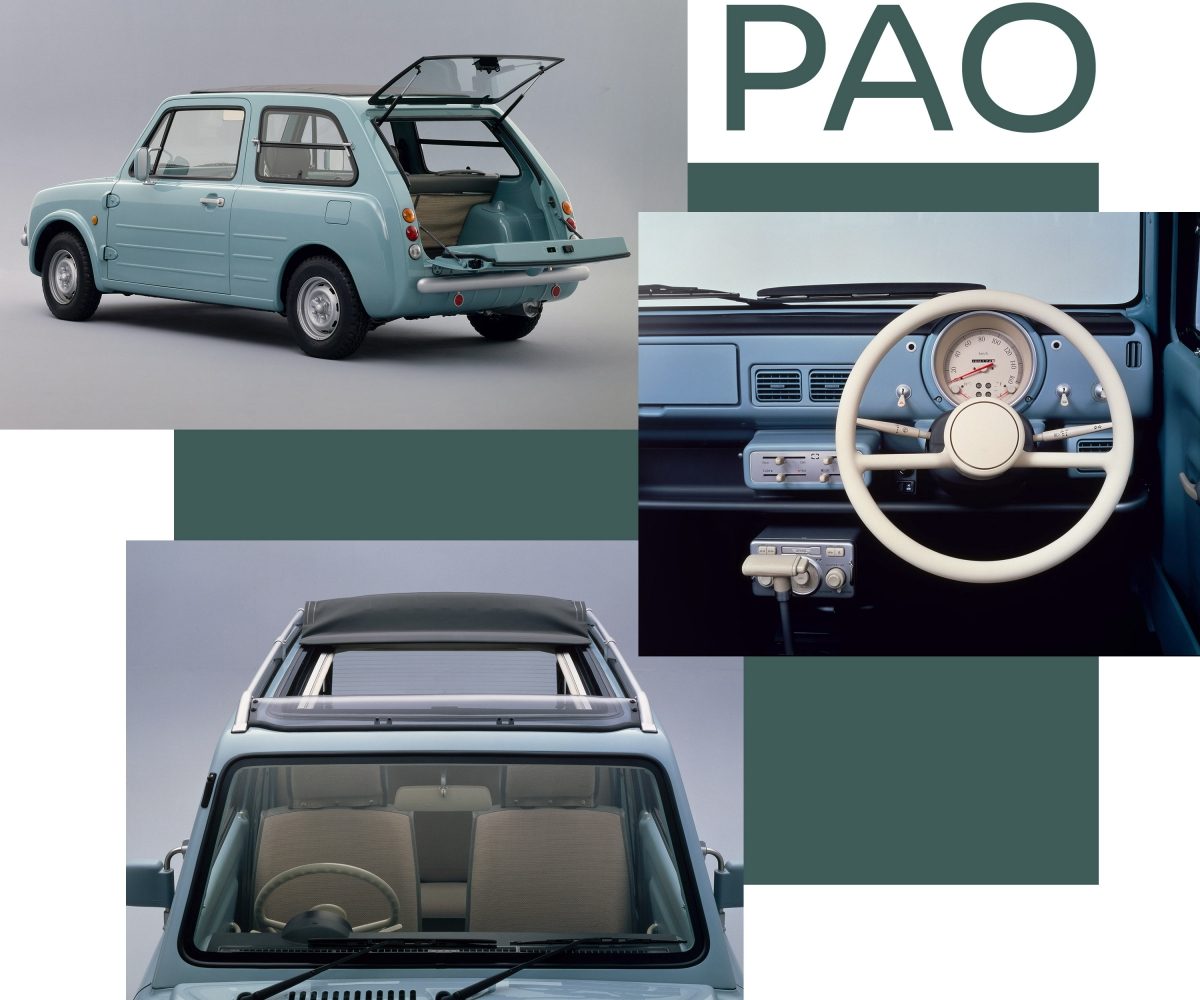
FIGARO TAKES US BACK TO THE FUTURE
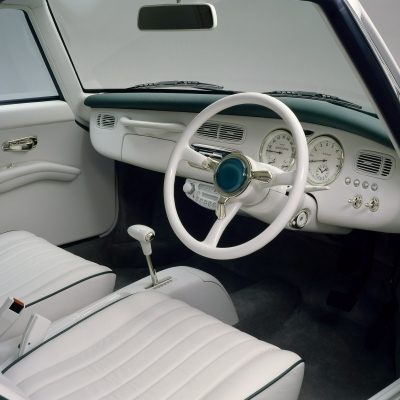
The Pao was joined in 1991 by the Nissan Figaro. The Figaro continued breaking ground for the automotive industry, starting with a development team predominantly made up of women. Whereas the Be-1 and Pao were designed with an eye to the ’50s, the Figaro took its main inspiration from the 1935 Datsun Roadster and art-deco fashion of the ’30s.
A fixed-body convertible that Nissan unabashedly marketed at the Tokyo Auto show with the tagline “Back to the Future”, the Figaro featured standard features like European-inspired styling, leather seats, and an in-dash CD-player. The Figaro was an inspired mix of classic luxury and state-of-the-art tech. As you might have guessed, all 20,000 sold out before a single car hit the road. If you didn’t snap one up, you were out of luck – Nissan stuck to its guns and produced the Figaro for just one model year.

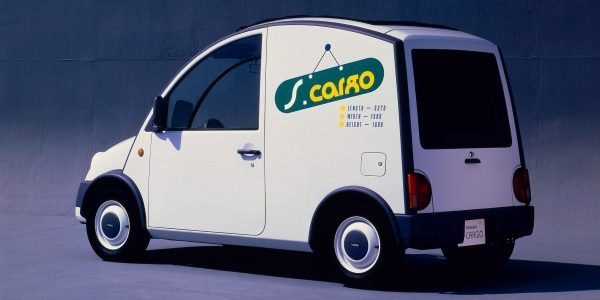
SNAILED IT WITH THE S-CARGO
Not to leave the commercial sector out of the fun, the Pike Factory designed what would become one of Nissan’s most legendary vehicles – though not for prowess on the track but for its truly one-of-a-kind styling.
When the Nissan S-Cargo came to market in January 1989, it brought a bit of whimsy to the commercial vehicle segment. Its name was a pun on the word “escargot”, the vehicle was designed to look like a snail, and its 48-inch-high domed cargo area allowed it to carry a fair amount. Then there’s the smaller, quirkier touches, like a removable sushi tray – that’s right, removable sushi tray – the tablelike dash, and the snail-themed floor mats.
While its unconventional looks have remained polarizing, the Nissan S-Cargo is rare and hard to find today.
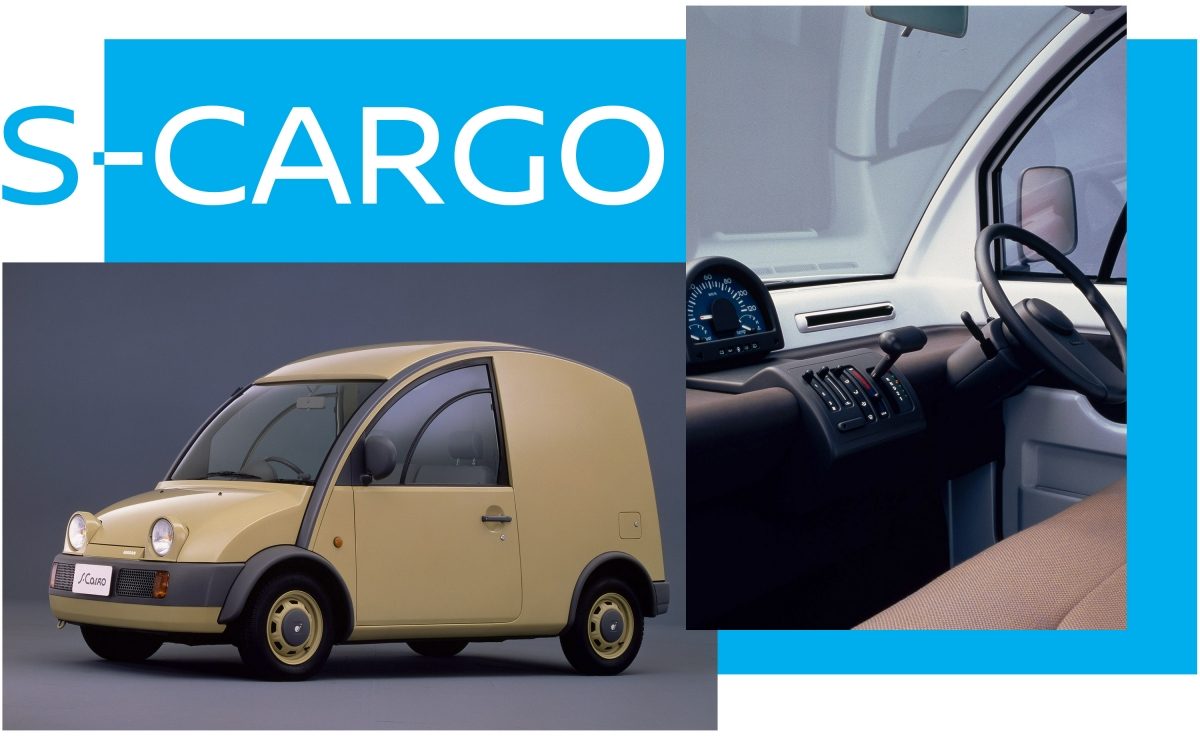
COLLECTOR CLUBS KEEP PIKE CARS IN DEMAND
As Pike cars have become available for export, they have begun to appear more often on American, United Kingdom, and European roads. In Britain alone, over 3,000 Figaros are registered as being in active use. With a production run of just 20,000, British owners account for 15% of all Figaros ever made. It’s no surprise, then, that Britain is home to one of the largest Figaro clubs in the world.
While Pike cars have been available for import into the United States for only a few years and have been received enthusiastically. Finding a Pike car for sale online is not impossible, but with a limited number to go around, the vehicles once again are in the position of being in high demand.
The Pike cars retain a place in the hearts of enthusiasts who enjoy their unique styling and the sunny optimism they embody. A new generation of drivers has started to discover them, while a new generation of quizzical onlookers tries to nail exactly which decade these timeless pieces came out of.
THINKING OUTSIDE THE BOXY DESIGN
Pike cars marked the first time that Nissan would lead with a design-first approach, focusing on remaining as faithful to the initial concept instead of compromising. To accomplish this, Nissan sought new methods of production, using moldable thermoplastic resin for the first time on its Pike cars to create the iconic rounded shapes on each vehicle.
In order to facilitate a small production run, Nissan had to streamline its entire planning and production process. Using readily available parts and employing new materials, Nissan was able to complete production of the Be-1 in one year, moving it from design to the showroom in half the time of any of its other vehicles.
LASTING IMPRESSIONS
The curvaceous design aesthetic and innovative processes developed by Nissan would go on to have a lasting impression on the automotive industry as a whole. Softer lines slowly displaced hard edges on everything from sport cars to family sedans in the 1990s. You can still find some of that magic today in vehicles like the Nissan March and Micra.
If you keep an eye out, you might even see a Pike car pulling up next to you at the next red light. Some things just never go out of style.








